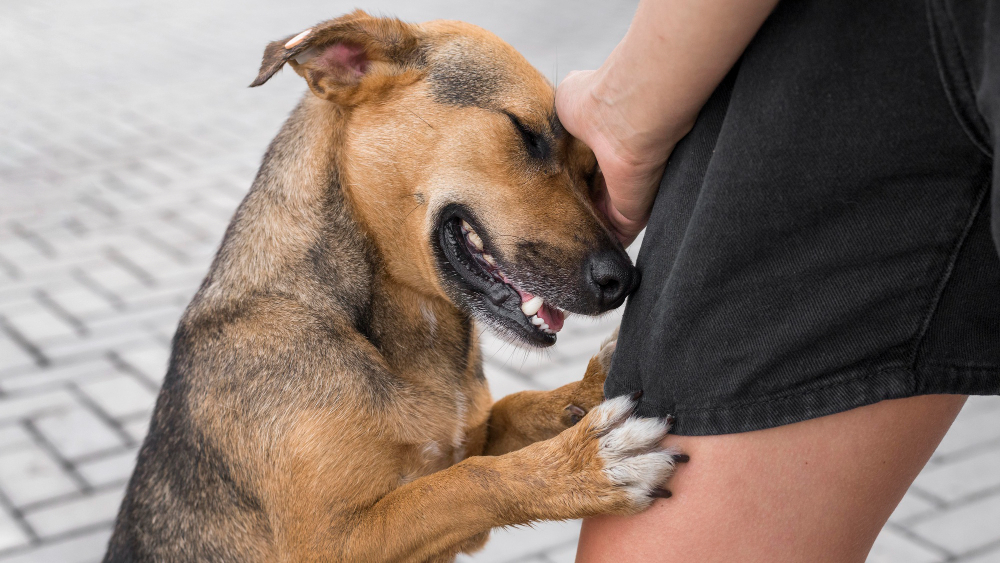Dogs, like humans, can experience a range of fears and phobias. These fear in dogs can stem from various sources, including lack of early exposure to different environments or negative experiences.
Recognizing and understanding the signs of fear in your dog, which can range from mild trembling and hiding to aggression, is the first step towards helping them overcome these fears.
Common Fears in Dogs and How to Address Them
Here are the following fears in dogs and how to address them:
1. Thunderstorm Anxiety (Astraphobia)

Many dogs exhibit fear of thunderstorms, showing varying degrees of anxiety.
Mild symptoms include trembling and subtle signs like flattened ears and a tucked tail, while more severe reactions may involve hiding, destructiveness, or losing control of their bladder.While some dogs with astraphobia react solely to thunder, others may show a broader noise phobia, becoming anxious due to fireworks, loud music, or traffic.
2. Fear of Fireworks

The fear of fireworks is akin to astraphobia but is triggered by the unpredictable and loud nature of fireworks.
This fear can be so intense that it may cause a dog to flee and get lost. Gradual exposure to recorded firework sounds can help some dogs, but others may require anti-anxiety medication or sedatives for management.
3. Separation Anxiety

Dogs with a fear of being left alone exhibit symptoms like destructive behavior, excessive barking, or accidents within the home.
Altering the owner’s departure routine and keeping greetings low-key can help. Gradual desensitization to being alone or crate training may also be beneficial. In severe cases, medication might be necessary.
4. Vet Visit Phobia

Fear of the veterinarian is a common issue in dogs, often initiated by unfamiliar smells, handling, and vaccinations during their first visit. To help ease this fear, non-medical visits to the vet for socialization, coupled with positive reinforcement, can be effective.
5. Car Ride Anxiety

Some dogs are fearful of car rides due to limited early exposure or negative experiences, such as motion sickness or association with traumatic events (e.g., being left at a shelter).
Overcoming this fear involves gradual acclimatization to the car, using treats and praise, and ensuring the destinations are enjoyable, like trips to a dog park or for a walk.
6. Fear of Men

It’s not uncommon for dogs to develop a fear of men. While sometimes linked to past abuse, this fear is more frequently attributed to insufficient socialization. Dogs unfamiliar with men might be intimidated by their deeper voices, larger physique, and features like facial hair.
To help dogs overcome this fear, gradual desensitization is key. This process should be non-threatening and involve exposing the dog to men from a safe distance.
During these sessions, it’s important for men to avoid direct eye contact or advancing towards the dog.
Remember, patience is essential as overcoming this fear takes time. Additionally, be aware that a scared dog might react defensively by growling, snapping, or biting.
7. Fear of Strangers

A dog’s fear of strangers is akin to the fear of men but extends to all unfamiliar individuals. This issue is challenging since it’s not feasible to acclimatize a dog to every new person they might encounter.
The best approach is to let the dog interact with strangers at their own pace. Forcing interactions can be counterproductive and may escalate to aggressive behavior.
It’s crucial to respect the dog’s comfort zone and allow them to gradually build confidence in dealing with new people.
Conclusion
Understanding and addressing the root causes of your dog’s fears and phobias is crucial in helping them lead a happy and stress-free life.
With patience, positive reinforcement, and sometimes medical intervention, most canine fears can be successfully managed or overcome.
Always remember that each dog is unique, and what works for one may not work for another.
Tailoring your approach to your dog’s specific needs is key to helping them conquer their fears.

